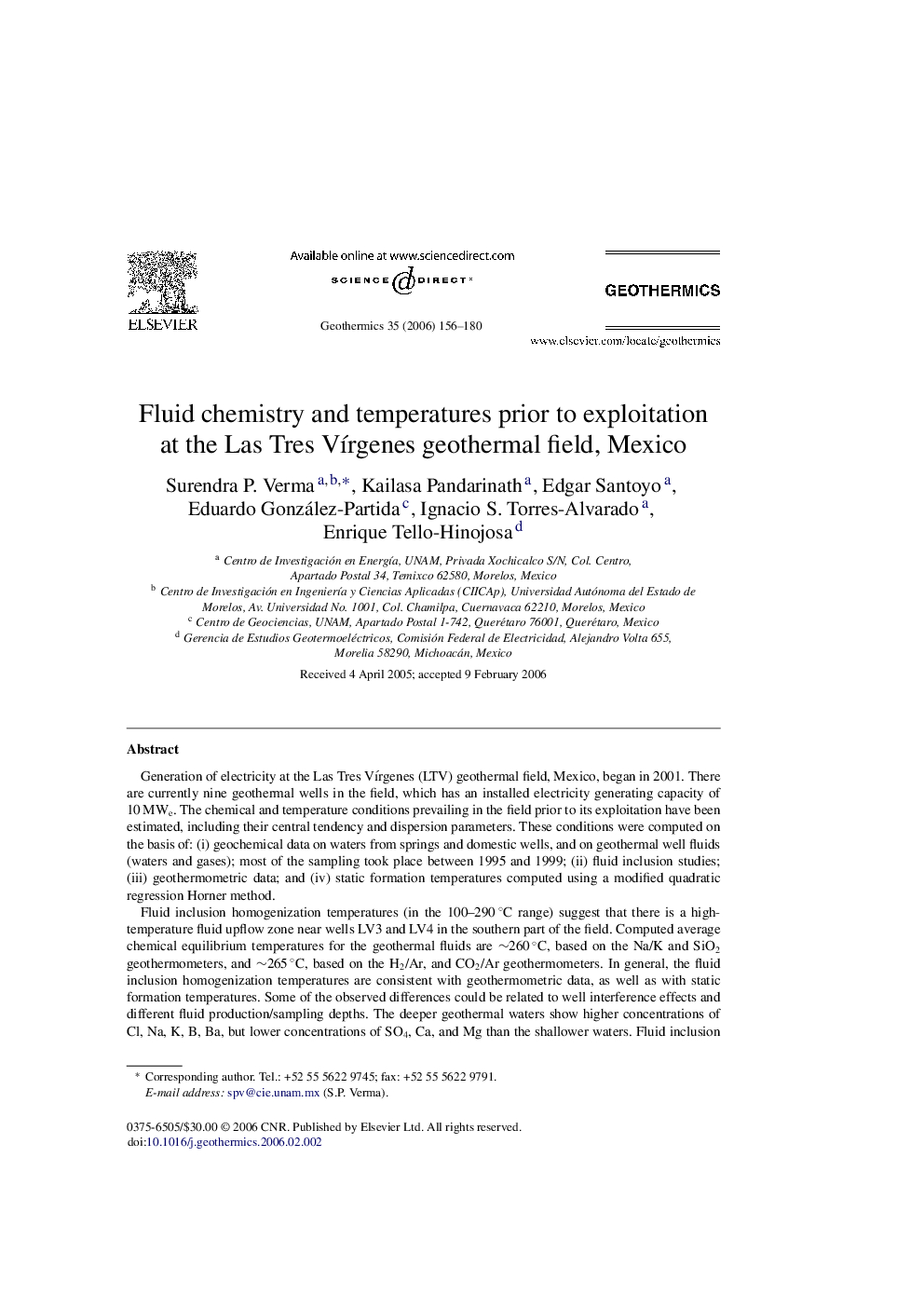| Article ID | Journal | Published Year | Pages | File Type |
|---|---|---|---|---|
| 1742806 | Geothermics | 2006 | 25 Pages |
Generation of electricity at the Las Tres Vírgenes (LTV) geothermal field, Mexico, began in 2001. There are currently nine geothermal wells in the field, which has an installed electricity generating capacity of 10 MWe. The chemical and temperature conditions prevailing in the field prior to its exploitation have been estimated, including their central tendency and dispersion parameters. These conditions were computed on the basis of: (i) geochemical data on waters from springs and domestic wells, and on geothermal well fluids (waters and gases); most of the sampling took place between 1995 and 1999; (ii) fluid inclusion studies; (iii) geothermometric data; and (iv) static formation temperatures computed using a modified quadratic regression Horner method.Fluid inclusion homogenization temperatures (in the 100–290 °C range) suggest that there is a high-temperature fluid upflow zone near wells LV3 and LV4 in the southern part of the field. Computed average chemical equilibrium temperatures for the geothermal fluids are ∼260 °C, based on the Na/K and SiO2 geothermometers, and ∼265 °C, based on the H2/Ar, and CO2/Ar geothermometers. In general, the fluid inclusion homogenization temperatures are consistent with geothermometric data, as well as with static formation temperatures. Some of the observed differences could be related to well interference effects and different fluid production/sampling depths. The deeper geothermal waters show higher concentrations of Cl, Na, K, B, Ba, but lower concentrations of SO4, Ca, and Mg than the shallower waters. Fluid inclusion salinities are also higher in the deeper rocks. The measured Na/Cl ratios of the geothermal well waters are more or less uniform throughout the field and are very similar to that of seawater, strongly suggesting a seawater component in the fluid of the LTV system.The heat stored in the LTV geothermal system was estimated to be at least 9 × 1012 MJ, of which some 4 × 1011 MJ (equivalent to about 148 MWe for 30 years of operation, assuming a conversion efficiency of ∼35%) might be extracted using wells. These results indicate that the installed capacity at LTV could be safely increased from the current 10 MWe.
